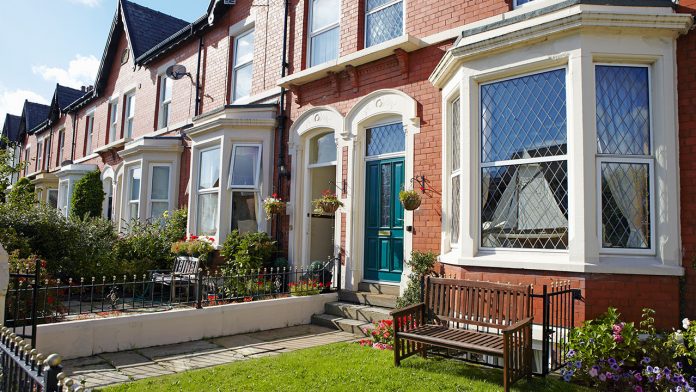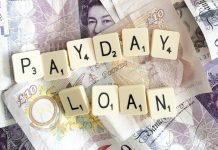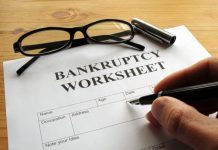The Home Affordable Refinance Program (HARP) is a U.S. federal program that began in 2009. The goal of the program is to help struggling homeowners refinance their mortgages. The following is a short history of HARP and how the program continues today.
The Crisis
After the U.S. housing bubble burst in 2007, homeowners found themselves in a difficult situation. Many saw the values of their homes fall close to or even below the value of their mortgages. Because banks required a loan-to-value ratio of 80% or less, many homeowners were not allowed to refinance with lower interest rates.
For example, imagine that a home was purchased for $160,000 but its value fell to $100,000 with the declining market. Now assume that the homeowner still owes $120,000 on the mortgage. In this scenario, the loan-to-value ratio is 120%. If the homeowner wished to refinance her mortgage, she would also need to pay for private mortgage insurance. If she was not already paying for private insurance, the added cost could cancel out most of the benefits of refinancing, effectively prohibiting the homeowner from refinancing their house.
Crisis Response
HARP was created in March 2009 to allow homeowners with loan-to-value ratios greater than 80% to refinance their mortgages. Originally only homeowners with ratios below 105% could qualify, although this was later expanded to 125%. In December 2011, the limit was abolished, allowing any people with negative home equity and mortgages up to 30 years to refinance their mortgages.
Criteria
Homeowners needed to meet several criteria to qualify for HARP. First, their mortgages needed to be guaranteed by Freddie Mac and or Fannie Mae. Because these organizations don’t directly deal with the public, many homeowners were not aware their mortgages were linked to these companies. The homeowners also needed to be current on their loan, with no late payments within a six-month period. Finally, the homeowners must have benefited from the refinancing with a lower monthly payment or a more stable product.
Because many lenders were unwilling to refinance to homeowners with private insurance, HARP 2.0 was later instituted. This allowed a homeowner to seek a refinance from any lender. HARP 2.0 also allows refinancing for all occupancy types. This means HARP now includes the primary household, a secondary home, or a rental property.
Recent Developments
In 2012, President Barack Obama said he wished to implement HARP 3.0. According to the plan, responsible homeowners would have the chance to save approximately $3,000 a year on their home mortgages. The plan is also expected to expand eligibility requirements for HARP benefits to homeowners who aren’t linked to Freddie Mac or Fannie Mae. Though still discussed, the plan for HARP 3.0 has not passed as of the writing of this article in May 2014.
The Home Affordable Refinance Program (HARP) has provided much-needed financial relief for thousands of Americans. People who have found that the value of their home has declined may be eligible to participate in HARP. The refinancing program enables homeowners to refinance an existing mortgage so they can receive a stable and secure one.
Before you begin applying for refinancing through HARP, you should be aware of the basic terms and phrases associated with the program. Now you know the history of HARP refinancing, find out if it’s the right option for you and your family and check out everything you need to know below.
Closing Costs
Closing costs are the additional fees that borrowers must pay in order to refinance a mortgage through HARP. You should be aware of the closing costs that a lender charges for refinancing a mortgage through HARP. If you find that the closing costs exceed the savings that you will enjoy, you may want to reconsider refinancing your mortgage. Those who have larger loan amounts will likely be able to reap the benefits of HARP. If you are refinancing a mortgage with a value of $200,000 or less, you may only break even on closing costs and monthly payment savings.
Eligibility
The HARP program lays out several conditions for eligibility. To be eligible to participate in HARP, you must have a loan that was owned or guaranteed by Fannie Mae or Freddie Mac before May 31, 2009. You be current on your mortgage payments. The program allows borrowers to participate if they have only been late on a payment once within the past year. Even if you are not eligible for HARP, you may still be eligible for a loan modification under the Home Affordable Modification Program (HAMP).
Interest Rate
The interest rate refers to the loan fee that a lender charges for your mortgage. The interest rate may vary on an annual basis if you have an adjustable-rate mortgage. Those who have adjustable-rate mortgages frequently take advantage of HARP so that they can refinance a mortgage into a fixed-rate mortgage. A fixed-rate mortgage features a stable interest rate, so homeowners do not have to worry about payments fluctuating.
Principal
The principal refers to the total amount that you owe for a mortgage. If you choose to refinance a mortgage, you should be aware of any prepayment fees that may be associated with the new terms. A prepayment fee may be charged if you are able to pay the mortgage in full before the term of the loan.
Refinancing
Refinancing a mortgage means that you modify the type of loan you have. You may convert a mortgage into a different type that makes sense for your financial situation. Refinancing a mortgage will also impact other terms of the mortgage, such as the interest rate or the principal balance owed.
Conclusion
If you are interested in participating in HARP, you should visit the official government website, MakingHomeAffordable.gov, to find a lender that administers the program near you. The Fannie Mae and Freddie Mac websites also feature tools to help you find a HARP lender near you.
Photo: Thinkstock/webking














